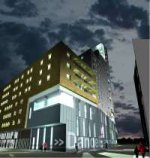Recently William Hudson of Syntagm set at challenge to find out the CO2 figure for the Honda Civic Hybrid:
DIY USABILITY TEST:
· Go to http://www.honda.co.uk
· Note the time
· Find the CO2 emission figure (important for UK tax purposes) for the Hybrid version of the Honda Civic (correct answer is 109)
· Jot down the time it took you and your satisfaction with the experience of finding this (0 = not at all, 5 = very)
· Send them …
This isn’t a pointless task, the CO2 figure for this car is important as it relates to UK tax breaks and is the reason as to why the car is exempt from the London congestion charge.
The results of this brief ‘study’ were worrying: “The average amount of time spent on the task was 7.2 minutes (ranging from 2.5 to 20). Only half of respondents found the information at all. Many respondents who failed did not specify a satisfaction with the experience, but this was taken as 0 (not at all satisfied). Mean satisfaction was 0.7 (median 0 = not at all satisfied).”
I’d concur with William’s suppositon that most customers probably get hold of a brochure – either by visiting a showroom or downloading it. What’s worrying is that a Google search for it works – but doesn’t pick up the Honda site.
The correct way of finding this information is:
· Click on "cars" at the top of the home page (http://www.honda.co.uk).
· Wait for the intro to finish (the one with the cards driving around) or press "Skip" when it eventually appears.
· Click on the image of the Civic.
· Click on the Civic again (or wait until the new animation finishes).
· A button appears on the right of the screen labelled "Build your Civic".
· Click on that and wait for the screen to load.
· Click on the specification tab.
· Scroll down the left panel to Fuel Economy. CO2 is the last figure shown.


